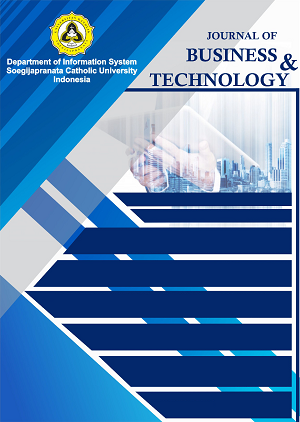Web-based Consulting Company Employee Timesheet
Abstract
Work timesheet is a form of work activity reporting that is usually implemented by a company to monitor the work of their employees. In this study, the researcher wanted to develop a Web-based Consulting Company Employee Timesheet which aims to facilitate the process of reporting and checking data in terms of work timesheets or reporting of work activities in a consulting company. The features developed are made in such a way that it is expected that the company's needs can be met according to the previous system of the consulting company. The method used for website application development is the waterfall method where the development stages occur sequentially. The method applied is through ERD ( Entity Relationship Diagram), Flowcharts, Use Case Diagrams, Activity Diagrams. After this web-based was created, the researchers conducted tests and interviews with admins, managers and employees of the consulting company, totaling 5 people. From the results of interviews with 5 respondents obtained a positive response to the development of a Web -based Timesheet for Consulting Company Employees.
Keywords
Full Text:
PDFReferences
M. Rafi, A. Nurmandi, and SA Afandi, "Analysis of the Usability of the Ministry of Religion's Website for the DIY Province and Riau Province," J. Komun. , vol. 12, no. 1, p. 92, 2020, doi: 10.24912/jk.v12i1.6960.
A. Jamalih, M. Cleopatra, A. Irawan, P. Studies, T. Informatics, and F. Engineering, “DATA REPORT QUALITY AND PERFORMANCE TIMESHEET APPLICATION DESIGN AT PT SIEMENS INDONESIA,” vol. 02, no. 02, pp. 251–258, 2021.
IA Ridlo, "Guidelines for Making Flowcharts," Academia.Edu , p. 27, 2017, [Online]. Available: academia.edu/34767055/Pedoman_Pembuatan_Flowchart.
L. Setiyani, "System Design: Use Case Diagram Introduction," Pros. Monday. Nas. inov. Technological Adoption. 2021 , no. september, pp. 246–260, 2021.
Aceng Abdul Wahid, "Waterfall Method Analysis for Information Systems Development," J. Informal Sciences.
Manaj. STMIK , no. November, pp. 1–5, 2020.
T. Hapnes and M. D. Fransisca, “Generator_Melodi_Berdasarkan_Skala_dan_A,” J. Inform. , vol. 5, pp. 1–96, 200
M. Larassati, A. Latukolan, A. Arwan, and M. T. Ananta, “Pengembangan Sistem Pemetaan Otomatis Entity Relationship Diagram Ke Dalam Database,” urnal Pengemb. Teknol. Inf. dan Ilmu Komput. , vol. 3, no. 4, p. 4059, 2019, [Online]. Available: http://j-ptiik.ub.ac.id.
I. T. Kusnadi, A. Supiandi, W. Kusnadi, and R. Riniawati, “Pengembangan Sistem Inventori Perusahaan Menggunakan Metode Usecase Driven,” J. Teknol. dan Inf., vol. 9, no. 1, pp. 24–36, 2019, doi: 10.34010/jati.v9i1.1341.
S. Dharwiyanti and R. S. Wahono, “Pengantar Unified Modeling LAnguage (UML),” IlmuKomputer.com, pp. 1–13, 2003, [Online]. Available: http://www.unej.ac.id/pdf/yanti-uml.pdf.
R. E. Permata and N. Nurahman, “Human Resources Information System (Hris) Di Pt. Sarmiento Parakantja Timber Berbasis Web,” J. Penelit. Dosen FIKOM …, vol. 10, no. 1, 2019, [Online]. Available: http://jurnal.unda.ac.id/index.php/Jpdf/article/view/127.
DOI: https://doi.org/10.24167/jbt.v3i2.10168
Refbacks
- There are currently no refbacks.
e-ISSN: 2776-0332 | View My Stats



